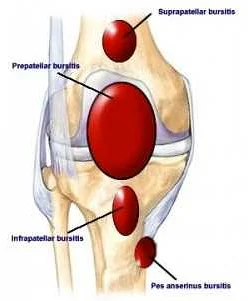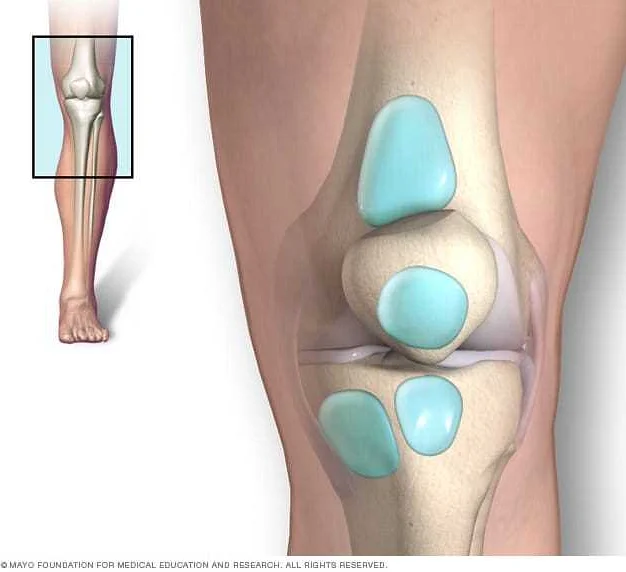Knee bursitis in adults
Содержимое
Knee bursitis is a condition characterized by inflammation of the bursae in the knee joint. It commonly affects adults and can cause pain, swelling, and limited mobility. This article provides an overview of knee bursitis in adults, including its causes, symptoms, diagnosis, and treatment options.
Knee bursitis is a common condition that affects adults of all ages. It occurs when the small fluid-filled sacs, called bursae, located around the knee joint become inflamed. These bursae act as cushions between the bones, tendons, and muscles, reducing friction and allowing for smooth movement of the joint.
There are several causes of knee bursitis in adults. One of the most common causes is repetitive kneeling or prolonged pressure on the knees, which can irritate the bursae and lead to inflammation. Other causes include trauma or injury to the knee, prolonged friction due to overuse or improper biomechanics, and underlying medical conditions such as arthritis or infection.
The symptoms of knee bursitis can vary from mild to severe. Common symptoms include pain, swelling, warmth, and tenderness around the affected area. The knee may also feel stiff or limited in movement. In some cases, fluid may accumulate within the bursae, causing a visible swelling known as a “bursa sac.” These symptoms can significantly impact daily activities and mobility.
Treatment options for knee bursitis aim to reduce inflammation, relieve pain, and improve mobility. Initially, rest and avoiding activities that exacerbate the symptoms are recommended. Applying cold packs and elevating the leg can help reduce swelling. Nonsteroidal anti-inflammatory drugs (NSAIDs) may be recommended to alleviate pain and inflammation.
In more severe cases, a healthcare professional may recommend draining the accumulated fluid from the bursa using a needle and syringe. This procedure, called aspiration, can provide immediate relief. Physical therapy exercises may also be prescribed to strengthen the muscles around the knee and improve joint stability.
Prevention plays a crucial role in managing knee bursitis. Maintaining proper posture and body mechanics during activities that involve kneeling or putting pressure on the knees is essential. Using knee pads or cushions can also help reduce the risk of bursitis. If an underlying medical condition is causing the bursitis, proper management of the condition is vital to prevent recurrence.
In conclusion, knee bursitis is a common condition that can cause pain, swelling, and limited mobility in adults. Understanding the causes, recognizing the symptoms, and seeking appropriate treatment options can help individuals manage and alleviate the discomfort associated with knee bursitis.
What is Knee Bursitis?
Knee bursitis is a condition characterized by inflammation of the bursae in the knee joint. Bursae are small fluid-filled sacs that act as cushions between bones, tendons, and muscles, reducing friction and allowing smooth movement.
When the bursae become inflamed, it can cause pain, swelling, and limited range of motion in the knee. Knee bursitis can be caused by repetitive movements, trauma or injury to the knee, overuse of the joint, or underlying conditions such as rheumatoid arthritis or gout.
The main bursae in the knee that can be affected by bursitis are the prepatellar bursa, located in front of the kneecap, the infrapatellar bursa, below the kneecap, and the anserine bursa, on the inner side of the knee.
Symptoms of knee bursitis include pain and tenderness around the affected bursa, swelling and redness, warmth to the touch, and difficulty with movement or bending of the knee. In some cases, the bursa may become infected, leading to additional symptoms such as fever and pus drainage.
Treatment options for knee bursitis include rest, ice therapy, compression, elevation, and nonsteroidal anti-inflammatory drugs (NSAIDs) to reduce pain and inflammation. Physical therapy may be recommended to strengthen the muscles around the knee and improve range of motion. In severe cases or cases of infected bursae, aspiration of fluid or surgical removal of the bursa may be necessary.
Prevention of knee bursitis involves avoiding repetitive activities that put excessive strain on the knee joint, maintaining a healthy weight, using proper protective equipment during sports or activities, and taking breaks and stretching regularly during prolonged kneeling or squatting.
In conclusion, knee bursitis is a condition characterized by inflammation of the bursae in the knee joint. It can cause pain, swelling, and limited range of motion in the knee. Treatment options include rest, ice therapy, medication, physical therapy, and, in severe cases, aspiration or surgery. Prevention involves avoiding excessive strain on the knee joint and practicing proper techniques during activities.
Causes of Knee Bursitis

Knee bursitis, also known as prepatellar bursitis, can be caused by various factors. Some of the common causes of knee bursitis include:
- Injury: Trauma or injury to the knee, such as a fall or direct blow, can lead to knee bursitis. The bursa, which is a small, fluid-filled sac that cushions the knee joint, can become irritated or inflamed as a result of the injury.
- Overuse: Repetitive activities that put strain on the knee joint, such as kneeling for long periods or participating in activities that involve frequent bending of the knee, can cause knee bursitis. The constant pressure and friction can lead to inflammation of the bursa.
- Infection: In rare cases, knee bursitis can be caused by an infection. Bacteria can enter the bursa through a cut or scrape on the knee, leading to an infection and inflammation.
- Medical conditions: Certain medical conditions, such as rheumatoid arthritis or gout, can increase the risk of developing knee bursitis. These conditions can cause inflammation throughout the body, including the bursa in the knee.
- Obesity: Excess weight can put added stress on the knee joint, increasing the risk of developing knee bursitis. The extra pressure can cause the bursa to become inflamed and painful.
It is important to identify the underlying cause of knee bursitis in order to effectively treat the condition and prevent future flare-ups. If you are experiencing symptoms of knee bursitis, it is recommended to consult with a healthcare professional for a proper diagnosis and treatment plan.
Symptoms of Knee Bursitis
Knee bursitis occurs when the bursa, a small fluid-filled sac that cushions the knee joint, becomes inflamed. This condition can cause a variety of symptoms that vary in severity. Some common symptoms of knee bursitis include:
- Pain: Individuals with knee bursitis often experience pain or tenderness around the affected area. The pain may be dull or sharp and can worsen with movement or pressure.
- Swelling: Swelling in the knee joint or the area surrounding the knee is another common symptom of knee bursitis. The swelling may be localized or more widespread depending on the extent of the inflammation.
- Redness and warmth: Inflammation can cause the skin around the knee to become red and warm to the touch. This is a result of increased blood flow to the area.
- Difficulty moving the knee: Knee bursitis can make it difficult to fully extend or flex the knee. This limited range of motion can affect daily activities and make walking or climbing stairs challenging.
- Tenderness and sensitivity: The affected area may feel tender to the touch and can be sensitive to pressure or contact. This can make it uncomfortable to wear tight or restrictive clothing.
- Crepitus: In some cases, knee bursitis can cause a crackling or popping sensation when moving the knee. This is known as crepitus and can be a sign that the bursa is inflamed and rubbing against other structures in the knee joint.
If you are experiencing any of these symptoms, it is important to consult a healthcare professional for a proper diagnosis and treatment plan.
Diagnosis of Knee Bursitis

Diagnosing knee bursitis typically involves a combination of a thorough physical examination and imaging tests. The healthcare provider will begin by taking a detailed medical history, asking about any recent injuries or activities that may have contributed to the development of knee bursitis.
During the physical examination, the healthcare provider will carefully palpate the affected area around the knee to check for swelling, tenderness, and warmth. They may also assess the range of motion and stability of the joint.
In some cases, the healthcare provider may perform certain tests to rule out other potential causes of knee pain, such as x-rays or magnetic resonance imaging (MRI) scans. These imaging tests can help visualize the bursa and surrounding structures to determine if there are any abnormalities or signs of inflammation.
In certain situations, the healthcare provider may also decide to extract fluid from the affected bursa for further analysis. This procedure, known as bursa aspiration, involves inserting a needle into the bursa and withdrawing fluid. The extracted fluid can then be examined under a microscope and tested for signs of infection or inflammation.
Overall, the diagnosis of knee bursitis relies on a combination of clinical evaluation, imaging tests, and sometimes laboratory analysis of the synovial fluid. An accurate diagnosis is essential for developing an effective treatment plan and preventing further complications.
| Thorough physical examination |
| X-rays |
| Magnetic resonance imaging (MRI) scans |
| Bursa aspiration |